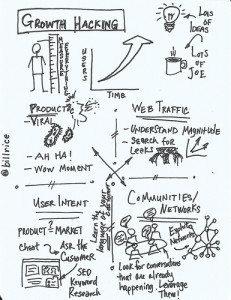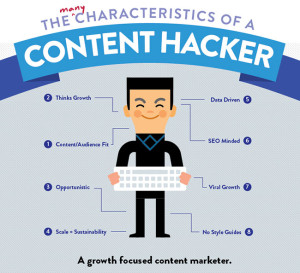We all understand how crucial content marketing is becoming. It’s no surprise that brands around the world are eager to add content marketing to their digital marketing strategies. The research-backed statistics highlight the significance of content marketing. According to Demand Metrics, 78% of CMOs believe content is the future of marketing, while Google Trends reveals that searches for the term “Content Marketing” have risen by 400% since January 2011. Another study by Content Plus indicates that companies with an active blog see 97% more leads.
You are probably already quite familiar with the term content marketing, but are you familiar with Growth Hacking? What is Growth Hacking and what does it have to do with content marketing? Let’s first quickly grasp the content of growth hacking to begin with.
What is Growth Hacking
Growth hacking is all about bringing in more traffic to your website and adding more users to your conversion funnel. It’s a term most startups use to refer to fast-track growth at optimized cost. But the practice itself is actually very useful for businesses of all size. At the end of the day, growth hacking is about fast results. It was first introduced by startup marketer Sean Ellis; defining it as the new-age Vice President of Marketing whereby thinking beyond traditional advertising methods, creative thinking and improvising is the name of the game.
Growth Hacking in Action
Apparently, one of the earliest solid examples of growth hacking was the result of clever content marketing, by Hotmail.com. In the late 1990s, the Hotmail team added as bit of text to the bottom of every email they sent as a way to stimulate growth: “PS I love You”. This simple four-word phrase resulted in a massive growth of over 12 million email accounts in less than a year. The massive database of users was noticed by Microsoft; and what followed was the acquisition of Hotmail.com by Microsoft for a large sum of $400 Million.

Growth Hacking and Content Marketing
So far, growth hacking sounds quite similar to marketing doesn’t it? Here’s the main difference. Traditional brand marketing is about building reach and awareness; which is a softer approach and most of the time not measurable, growth hacking is all about crunch numbers and data analysis. While it is important for the marketing team to understand the brand’s audience, it is vital for the growth hackers to understand the product, in and out. Most of the time, the best growth hackers are the product owners themselves. The main task for a growth hacker is to read into data and deduce learnings on how the numbers relate to each product feature and how they can leverage their product to improve on those numbers.
Similarly, content marketing should not just be about another blog post and the occasional tweet. It really should be about preparing your content with a purpose and that purpose should be none-other than to drive maximum traffic to your website.
What does this mean for content marketers? It means, when you’re writing a headline, for instance, it shouldn’t be just any headline. It should be awesome headlines. This is nothing new, but the catch is there will always be new ways to write better headlines that prompts readers to want to click or scroll down to read more. If your headlines are not creating the desired actions, then you’re losing potential web traffic and this is what growth hacking is all about.
Another example is the distribution of your content. If you’ve spend hours preparing a magnificent piece of content, it should drive at least enough traffic to make it worth your time preparing that content. This is where ‘shareability’ takes spotlight. If your graphical content is too large and heavy to load, sharing becomes difficult and hence lowers the chance of that content to be naturally discovered and picked up. Or are you using advanced vocabulary when in fact you are writing for young teens as your main target audience per se?
These are just a few examples of what growth hacking means for the content marketer.
The Content Hacker
Just like there are traditional marketers and growth hackers; there are content marketers and then there are content hackers. Content hackers are inherently content marketers who are highly effective in using their content to maximize website traffic. The content hackers are people who do not just churn out content, but lays out a content strategy beforehand and optimizes every part of their content material possible to maximize shareability and convince readers to end up on the brand’s website.

For the content hacker, it’s about telling better stories, understanding distribution channels, understanding technology limitations and opportunities, thinking creatively with words and images, and the stamina to not only design content strategies but to carry them out immaculately.
The Content Hacker Profile
So are you a content hacker? Here are some characteristics many content hackers share. If you find that you related closely with many of them, then chances are that you are already a content hacker. Some may sound a bit negative but is actually a much needed characteristic for this role. For instance, the effective content hacker should have a high opportunistic tendency. This means the eye identify new channels for content distribution, riding the tide on new content trends and news for example.
The content hacker is someone who is very SEO-minded, preparing materials not only for web audience but for search spiders as well. They are also data driven, seek sustainability, think always about growth, are business-minded, facts oriented and apparently tend to ignore style guides!
P. S. And finally content hackers do not guess. They test.